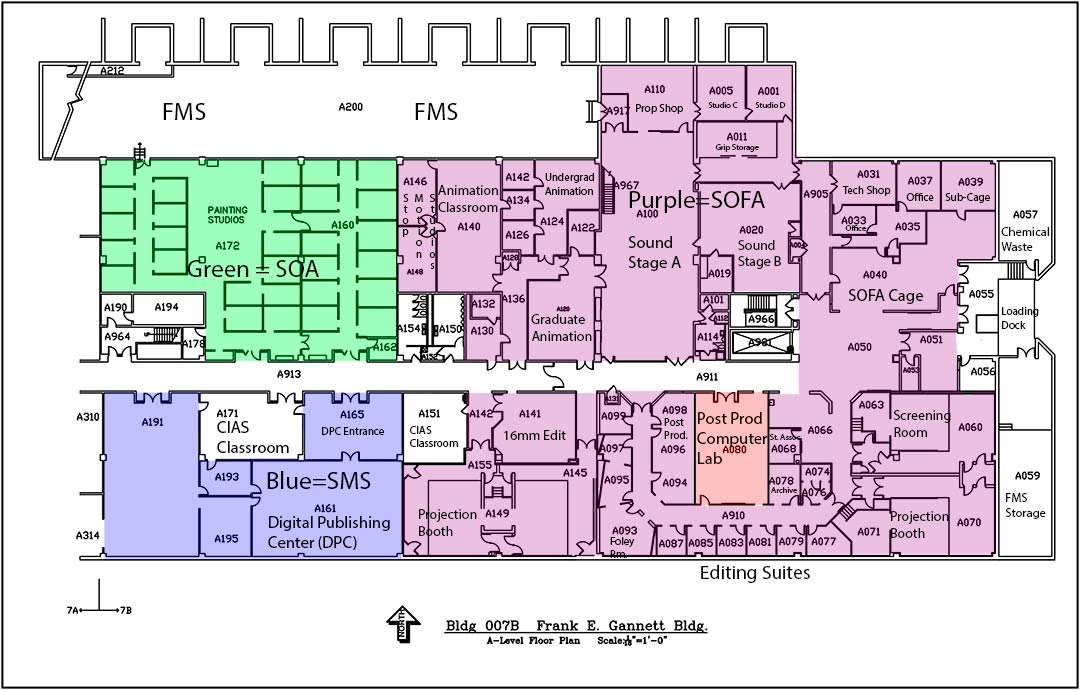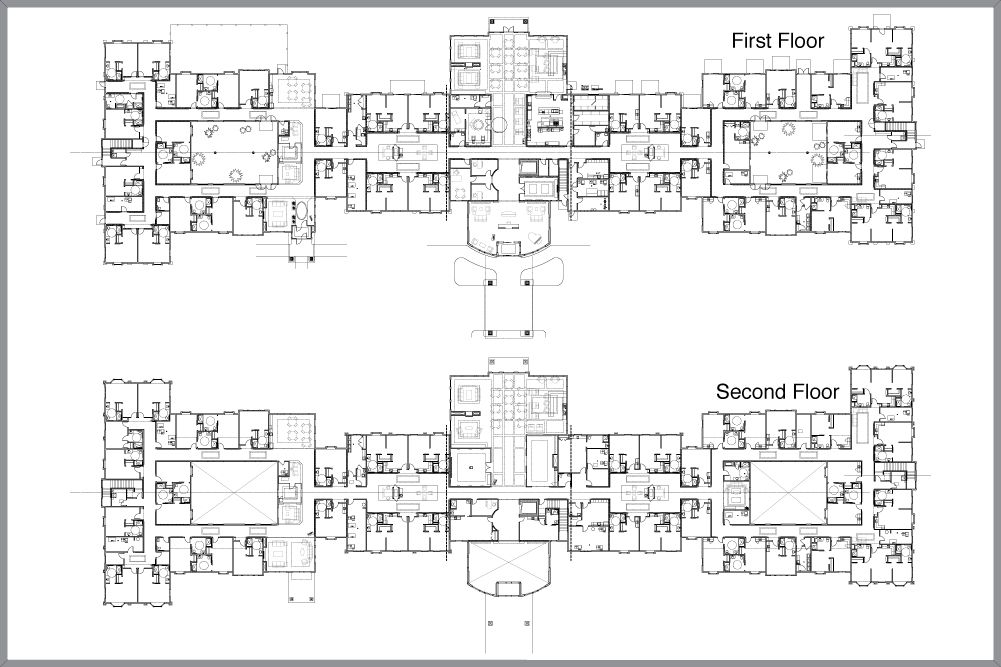8 Ways to Improve Communications on your Construction Project

I like to think of the construction team working on a commercial project as an orchestra: the consultants are the composers who drafted the score, the trades are the musicians who bring the score to life, and the general contractor is the conductor who is responsible for bringing it all together.
If we assume for a minute that the contract documents contain all of the information needed to build the final project, then from the outside looking in, it might seem like the general contractor isn't really needed. But this is far from true... just as the conductor is critical for guiding the musicians, the general contractor is the key broker of information between all of the parties.
When everyone is on the same page and working from the same plan - construction can be incredible.... but when people are going in different directions, well that's when trouble arises. The difference between the two scenarios is often a matter of how good the general contractor is with their communication.
With that in mind, here are 9 ways to improve communication on your construction project.
Subtrade Kickoff Meetings
A new subcontractor mobilizing to site presents a great opportunity to get the key people from their team aligned with project expectations. For major scopes the best practice would be to have both the office teams and the field teams meet.
This is your opportunity to communicate:
- The current project schedule - both the long term master schedule, and shorter term lookahead schedules
- Safety requirements and expectations when on site - what does orientation for new workers look like, what paperwork is required to be submitted, PPE requirements, etc.
- Site logistics - how to access the site for workers and for deliveries, material travel routes on site, availability of hoisting equipment (if any), etc.
- Permit requirements - these could be judicial requirements of the trade (a plumbing permit), or operational requirements set by the general contractor or the client (hot work permits, shutdown permits, etc.)
- What the quality program looks like for the project - when to expect inspections, how punchlists will be tracked and communicated, deficiency holdbacks, etc.
- How payment works - when to invoice, how you will mutually agree on how much work is done, when deposits should be expected, mandatory paperwork to submit with each invoice, etc.
In my experience, while its good to have a meeting with the office teams that may or may not include the field staff, subtrade kickoff meetings on site that involve only the site personnel (your superintendent, and their foreman) are incredibly valuable for establishing ground rules on site. When the guys with the dress shoes aren't there, the guys with the work boots can have a much more frank and straightforward conversation leading to better alignment as the project moves on.
Take notes and distribute minutes. Kickoff meeting minutes are valuable documents to refer back to if things ever need to get back on the rails.
Foreman Meetings
Another excellent way to improve site wide communications are to have regular foreman meetings where all of the foremen from the various trades actively working on site (or about to start / return to site) get together to talk about their near term plans.
A quick daily huddle with a longer weekly meeting to respectively talk about the plan for today and the week ahead, helps the trades sequence their work such that electrician understands what the plumber is doing so that they stay out of each other's way, and for the framer knows how much time they have to frame the next few suites without holding up the trades that are chasing them.
Formally documenting daily standups is onerous and is unlikely to add much value in the long run. Time is precious on a construction project, and you are going to meet again tomorrow. My suggestion is to have the meetings, and let them be informal.
Consultant & Trade Meetings
Written communication is great - when there are questions, an RFI can be issued to gain clarity about the design intent from the relevant consultant(s)... But there is something to be said for meeting, seeing, and walking the site together.
Its worth remembering that for every project you have on the go - the consultant you are working with likely has 10. Consultants are often spread thin, and while they are likely to know the end product quite well, they are unlikely to understand the nuance the contractors are facing when the project is in a partially complete state. Having the consultant team walk the site with the relevant trade foreman provides an incredible amount of added insight that is very difficult to capture with an RFI (even one with pictures and videos!).
Get the consultants out to your site as often as you can, look at progress and problems first hand, and document the meeting. Distribute minutes to the participants, and anyone else who stands to benefit from the information - including the other consultants and the office teams for the trades. Include general information about the current state of the project, any specific details that were reviewed, important discussions that were had, and any takeaway action items from the meeting that with both the person responsible and a due date.
When you get people together who speak the same technical language, its amazing what can come out of it!
Phasing Drawings

Colour coded phasing drawings are an excellent way of communicating a sequence or plan at a glance. Phasing drawings can be used to create look ahead schedules that show each trade in a different colour, concrete pour plans, material handling routes at different stages of the project, or to identify major work areas that tie to lines on a gantt chart.
If a project has major phases to it - using a colour coded phasing drawing can be helpful in communicating the phase plan quickly and effectively to anyone who sees it.
Print these and post them in high traffic areas like the job shack or site office to get the most eyeballs on them.
Master Schedule Gantt Charts
Have you ever worked on a project that didn't have a master schedule? I have seen projects like that and I have trouble wrapping my head around them. For me, if I had to choose a single document that encapsulates the entire project, it is the master schedule as a gantt chart because a good start-to-finish master schedule tells the entire story of the project plan.
For longer or large scale projects, consider including all of the major activities for each trade contractor, long lead time items, key schedule milestones, required inspections, and time for close out. Review a draft schedule and get input from your trade contractors during the subcontract buyout process to align them with the overall project objectives by sequencing activities in a coherent flow and with mutually acceptable durations.
If the trades have bought in to how much time each activity has on the schedule, and the order in which the activities will take place - the gantt chart is the tool for communicating this information to the other stakeholders on the projects.
Regular updates of the schedule keep everyone in the loop and accountable to the overall project goals.
Printed Whiteboards

It is possible (and fairly inexpensive) to have a drawing printed onto a dry-erase whiteboard. The first time I saw a building plan whiteboard on a project my mind was blown... I could write all over it and erase at will without impacting the drawing underneath.
I've seen printed whiteboards used very effectively in conjunction with foreman meetings:
- Each trade contractor is given a different colour of marker.
- In the morning, the foreman standup happens in front of the whiteboard and each foreman colours in the area they will be working (as a box around a room, by highlighting walls, circling windows, etc.). If two or more colours overlap, a quick chat can resolve the conflict before anyone trips over someone else.
- Then throughout the day, if a question comes up or someone gets blocked, they can write a question or comment on the board with their designated colour for review the next morning.
Printed whiteboards can also be used to denote danger areas, travel routes, material lay down areas, or any number of other things.
Text Messages
We are well into the 21st century and everyone has a phone these days. Unless you are working in a remote area without cell reception, SMS messaging or using an instant messaging app on the jobsite are an effective way for communicating urgent/time-sensitive messages. If you are in a loud area, communicating by text message is often far more likely to be clearly understood as compared to a voice call.
In general, we shouldn't rely on text messages as a primary method of communication, but they can be very effective for updates or questions that only need a short reply. Consider a check-in with a supplier who is coming to site to drop off materials:
"Confirming your delivery is still scheduled for 3:00 this afternoon. Please reply yes or no"
"Yes - we'll be there"
This exchange was probably quicker for both parties than a phone call would have been, is more likely to be received than an email, and if you later forget what the answer was - there is a written record to refer back to.
Good Old Fashioned Phone Calls

Have you noticed that we're on the last point and I haven't yet mentioned email? In many corners of the construction industry, email has become the ubiquitous method of communication. Between notifications from random project management software, to newsletter subscriptions, fantasy sports updates, and company wide internal communications people's inboxes are overflowing, and its very easy for your email to get lost in a sea of other emails.
Does email still have a place? Absolutely it does, and it's likely to for a long time - but if you're sending an email, its no longer reasonable to expect someone will read it quickly or get back to you in a timely way.
A good old fashioned phone call remains one of the best ways to connect with someone and share information.
Phone calls create a two-way, instantaneous dialog, where you can share what you need to share, ask what you need to ask, and get the answers right there on the spot. It's also much more personal than email, and provides a chance to deepen the human connection with someone in a relationship driven industry. You can always follow up the conversation with an email to document what was discussed for future reference.
One of the my favourite pieces of advice to young people starting a career in construction is to pick up the phone and make a call.
Thanks for taking the time to read this - I hope the content was valuable to you. If you would like receive regular nuggets of wisdom like this one delivered to your inbox, please join the community as a subscriber!
This article, and all other articles published on this site represent my personal opinions and are protected by copyright laws.